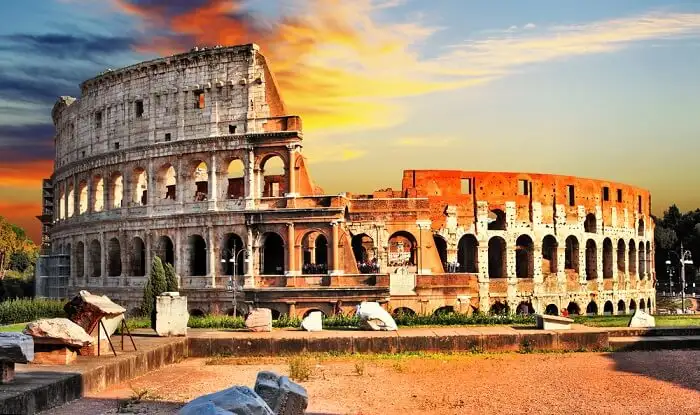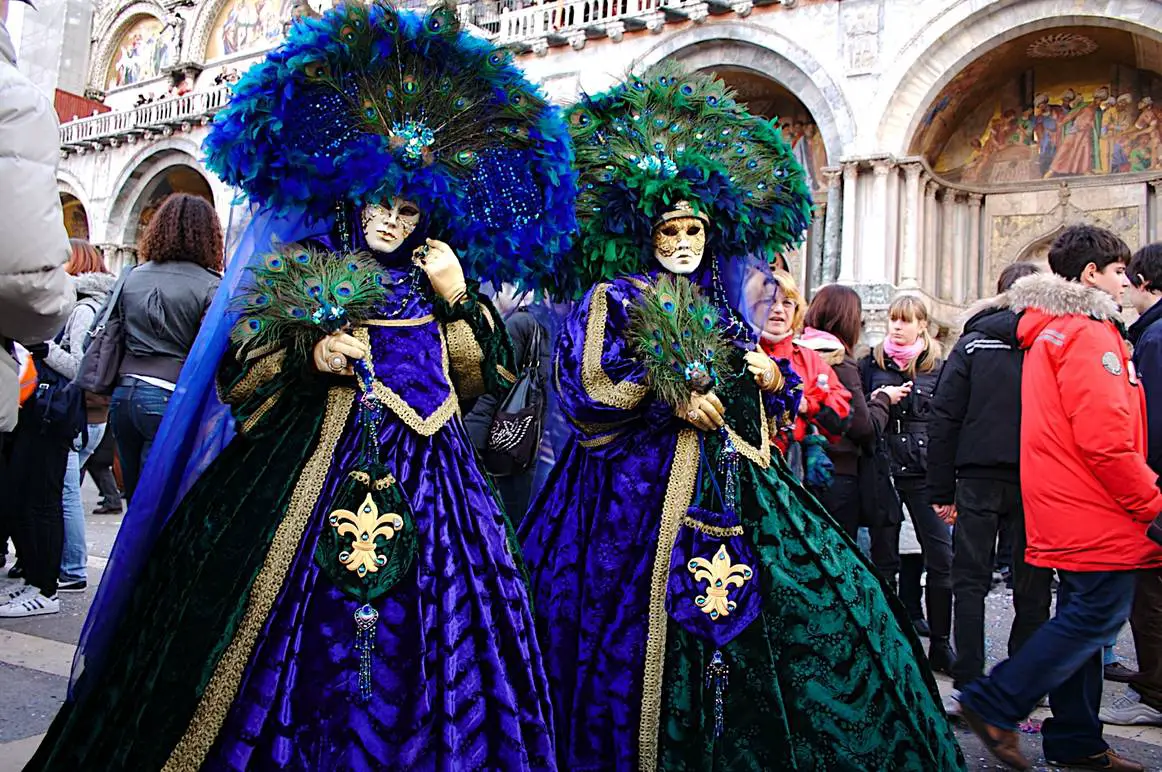The Colosseum in Rome, Italy is one of the most iconic and awe-inspiring structures in the world. Built in 80 AD, it has stood as a symbol of Roman engineering and ingenuity for nearly 2000 years. Beyond its impressive architecture, the Colosseum also stands as a testament to the historical significance of the Roman Empire.
From gladiatorial games to executions, the Colosseum has seen a multitude of activities over its long and illustrious history.
History of the Colosseum
The history of the Colosseum is a fascinating journey through time. Construction of this magnificent structure began in 72 AD under the orders of Emperor Vespasian, but it was not completed until 80 AD, during the reign of his son Titus. The Colosseum was originally called the Flavian Amphitheatre, named after the Flavian dynasty to which the emperors belonged. It was built as a gift to the Roman people, a venue for public spectacles and entertainment.
Throughout its history, the Colosseum has witnessed a wide array of events. From gladiatorial battles and animal hunts to mock sea battles and even public executions, the amphitheater was the epicenter of entertainment and brutal spectacle in ancient Rome. It could hold up to 50,000 spectators, who would gather to watch these events unfold with awe and anticipation.
Over the centuries, the Colosseum fell into disrepair and was heavily damaged by earthquakes and looting. However, efforts to restore and preserve this iconic symbol of Rome began in the 18th century and continue to this day. Today, the Colosseum stands as a testament to the ingenuity of ancient Roman engineering and remains a must-see attraction for visitors from around the world.
The rich history of the Colosseum is a window into the world of ancient Rome and a reminder of the enduring power of human creativity and ambition.
The Colosseum’s Architecture
When it comes to architecture, the Colosseum is an undeniable marvel. This massive amphitheater is a testament to the architectural brilliance of ancient Rome. Standing at a height of 157 feet and covering an area of over 6 acres, it is a sight to behold.
The Colosseum was constructed using various materials, including travertine limestone, brick, and concrete. Its elliptical shape allowed for optimal acoustics and seating arrangements, ensuring that every spectator could witness the events happening within. The outer façade featured three levels of arches adorned with decorative sculptures, creating a grand and imposing entrance.
Inside, the Colosseum had a complex system of tunnels, chambers, and lifts that allowed for the smooth flow of animals, gladiators, and props onto the stage. It also had a retractable awning called the velarium, which shielded spectators from the scorching sun or provided shelter during rain.
The Colosseum’s architecture was not just about aesthetics. It was a remarkable engineering feat that showcased the ingenuity and expertise of the ancient Romans. Today, it serves as a testament to their advanced building techniques and continues to inspire awe and admiration from visitors around the world.
Entertaining events held in the Colosseum
Throughout its history, the Colosseum played host to a wide range of entertaining events that captivated the Roman people. Gladiatorial battles were one of the most iconic and thrilling spectacles held in the amphitheater. These fights, where trained fighters would face off against each other or against fierce animals, drew massive crowds who cheered and jeered as the action unfolded. The atmosphere in the Colosseum during these battles was electric, with spectators on the edge of their seats, their anticipation palpable.
Animal hunts were another popular event that took place in the Colosseum. Exotic animals from across the Roman Empire, including lions, tigers, and elephants, were brought into the arena for these displays of hunting prowess. The skill and bravery of the hunters, along with the ferocity of the animals, created a spectacle that was both thrilling and dangerous.
Mock sea battles, known as naumachiae, were also held in the Colosseum. The arena would be filled with water, and large-scale naval battles would be reenacted for the amusement of the crowds. This involved the use of warships and an intricate system of canals and drainage, showcasing the ingenuity of Roman engineering.
Public executions were perhaps the most brutal events held in the Colosseum. Criminals and prisoners of war would be sentenced to death and executed in front of the crowd, often through methods such as crucifixion or being thrown to wild animals. These events served as a deterrent to crime and a reminder of the power and authority of the Roman Empire.
The range of entertaining events held in the Colosseum demonstrates the importance of spectacle and entertainment in ancient Rome. It was a place where people from all walks of life could come together to witness awe-inspiring feats and experience a sense of communal excitement.
Gladiators in the Colosseum
Gladiators in the Colosseum were the true stars of the show. These highly skilled fighters captivated the Roman crowds with their strength, agility, and bravery. Trained in combat techniques, they were pitted against each other or against ferocious animals, all for the amusement of the spectators. The battles between gladiators were intense and adrenaline-fueled, with the outcome often resulting in life or death.
The Colosseum provided the perfect stage for these epic battles, with its grand architecture and massive seating capacity. The crowd would roar with excitement as gladiators clashed in mortal combat, their swords and shields gleaming in the sunlight. These fights were not just about bloodshed, but also served as a form of entertainment, spectacle, and a display of skill.
Gladiators came from various backgrounds, including slaves, prisoners, and even some free men seeking fame and fortune. They trained rigorously and fought with honor, hoping to earn the favor of the crowd and gain their freedom.
Today, the legacy of the gladiators lives on in the collective imagination, with movies, books, and even video games paying homage to these iconic figures. The gladiators in the Colosseum were not just warriors, but also symbols of resilience, endurance, and the unquenchable spirit of human determination.
Restoration efforts and current state of the Colosseum
Over the centuries, the Colosseum has suffered extensive damage from natural disasters and human intervention. However, thanks to dedicated restoration efforts, this magnificent structure has been preserved and stands proudly as a symbol of ancient Rome’s glory.
Restoration work on the Colosseum began in the 18th century and has continued ever since. The main goal of these efforts has been to stabilize the structure, repair damage, and ensure its long-term survival. The restoration process has involved extensive research, analysis, and meticulous craftsmanship.
In recent years, major restoration projects have focused on the cleaning and conservation of the Colosseum’s exterior. This involved removing layers of dirt and grime to reveal the true beauty of the ancient stone. Additionally, measures have been taken to reinforce the structure and address areas of structural weakness.
Today, visitors can witness the Colosseum in all its grandeur. While some parts of the Colosseum are still inaccessible, the majority of the structure is open to the public, allowing them to marvel at its ancient splendor. The restoration efforts have ensured that future generations can continue to appreciate this architectural marvel and experience a tangible connection to the history of ancient Rome.
Cultural Significance of the Colosseum
The cultural significance of the Colosseum cannot be overstated. Beyond its architectural and historical importance, this magnificent structure has become a symbol of Rome and its enduring legacy. The Colosseum represents the grandeur and power of the Roman Empire, showcasing the immense wealth and resources of the time. It stands as a testament to the values and priorities of ancient Rome, where public spectacles and entertainment were of paramount importance.
Today, the Colosseum continues to capture the imagination of people from all over the world. It serves as a potent reminder of the rich history and cultural heritage of Rome. It is a pilgrimage site for history enthusiasts, offering a tangible connection to the past. The Colosseum’s grandeur and allure have also inspired countless works of art, literature, and film, ensuring its place in popular culture.
Moreover, the Colosseum plays a vital role in preserving and promoting cultural tourism in Rome. It draws millions of visitors each year, who come to marvel at its ancient beauty and learn about the fascinating history of ancient Rome. The Colosseum’s cultural significance is not just confined to the past but continues to shape and inspire the present, providing a lasting legacy for future generations.


